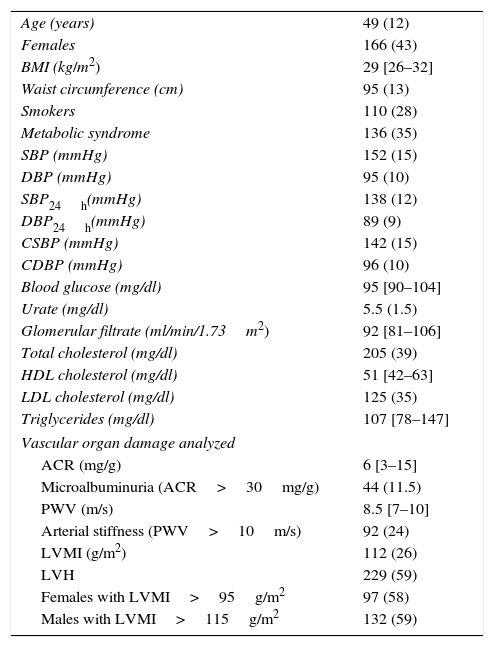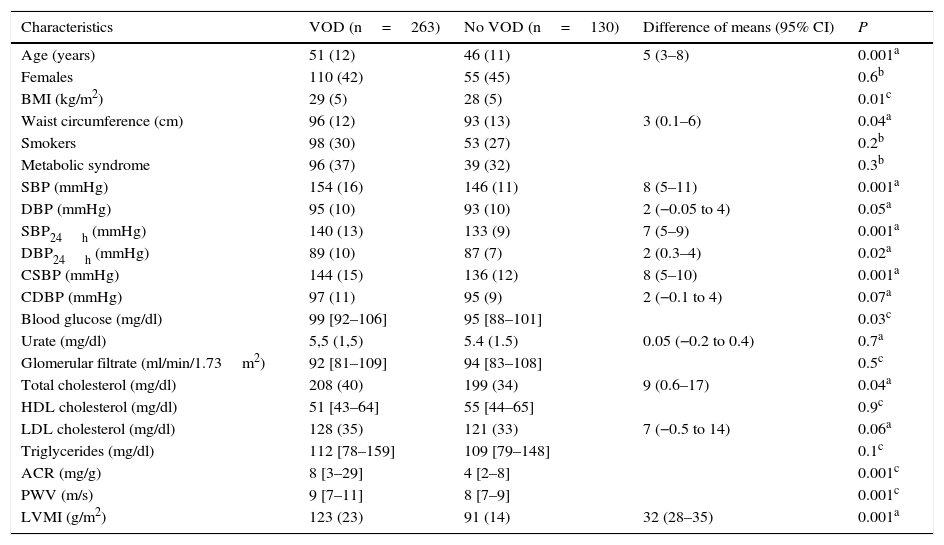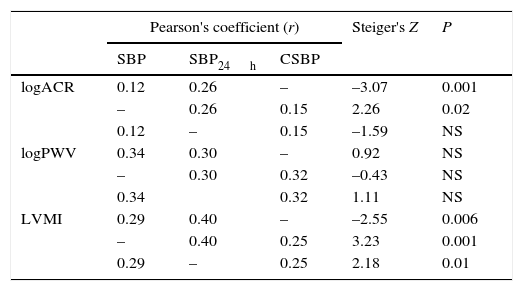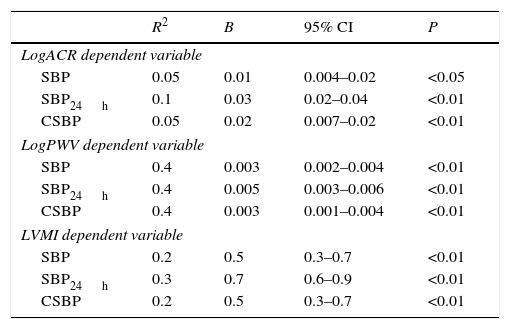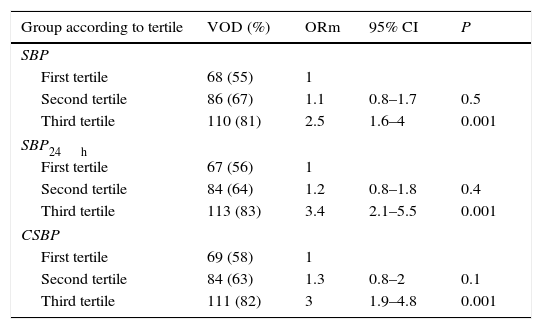The aim of this study was to assess the relationship between central blood pressure and vascular damage.
Patients and methodsThis cross-sectional study involved 393 never treated hypertensive patients (166 women). Clinical blood pressure (BP), 24h blood pressure (BP24h) and central blood pressure (CBP) were measured. Vascular organ damage (VOD) was assessed by calculating the albumin/creatinine ratio (ACR), wave pulse pressure velocity and echocardiographic left ventricular mass index (LVMI).
ResultsPatients with VOD had higher values of BP, BP24h, and CBP than patients without ACR. When comparing several systolic BP, systolic BP24h had a higher linear correlation with CBP (Z Steiger test: 2.26; P=.02) and LVMI (Z Steiger test: 3.23; P=.01) than PAC. In a multiple regression analysis corrected by age, sex and metabolic syndrome, all pressures were related with VOD but systolic BP24h showed the highest correlation. In a logistic regression analysis, having the highest tercile of systolic BP24h was the stronger predictor of VOD (multivariate odds ratio: 3.4; CI 95%: 2.5–5.5, P=.001).
ConclusionsCBP does not have more correlation with VOD than other measurements of peripheral BP. Systolic BP24h is the BP measurement that best predicts VOD.
Valorar la posible relación de la presión arterial central con el daño vascular.
Material y métodoEstudio observacional transversal en 393 pacientes con hipertensión arterial sin tratamiento farmacológico previo (166 mujeres). Se midieron las presiones clínicas (PA), ambulatorias de 24h (PA24h) y centrales (PAC). Para determinar la presencia de lesión de órgano diana (LOD) se calculó el cociente albúmina/creatinina (CAC), la velocidad de onda de pulso y el índice de masa del ventrículo izquierdo (IMVI) por ecocardiografía.
ResultadosLos pacientes con LOD tenían valores más altos de PA, PA24h y PAC. Al comparar las distintas mediciones de PA sistólica, la PA24h sistólica tuvo una mayor correlación con el CAC (test Z Steiger: 2,26; p=0,02) y con el IMVI (test Z Steiger: 3,23; p=0,01) que la PAC sistólica. La PA24h sistólica tuvo una mayor relación en el análisis de regresión múltiple con los índices de daño vascular analizados que las respectivas de PA y PAC tras corregir por edad, sexo y síndrome metabólico. Mediante un análisis de regresión logística, presentar cifras de PA24h sistólicas incluidas en el tercil superior fue el mejor predictor de presentar alguna de las LOD (odds ratio multivariante 3,4; IC al 95%: 2,5–5,5, p=0,001).
ConclusionesLa PAC no tiene mayor correlación con las LOD analizadas que otras medidas de PA periférica. La medición de la PA24h identifica mejor a los pacientes con daño vascular.
Artículo
Comprando el artículo el PDF del mismo podrá ser descargado
Precio 19,34 €
Comprar ahora







